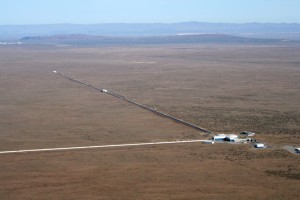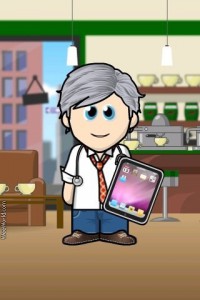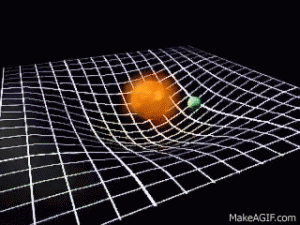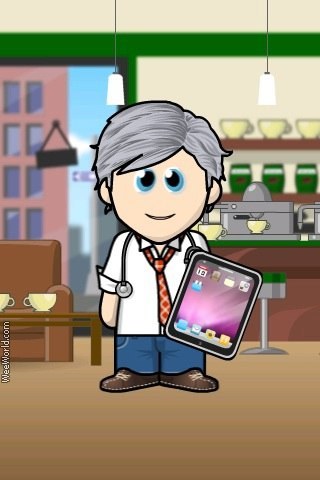Feb 13 2016
More bloody waves…putting Einstein to the test‘The hardest part is not to answer but to conceive the question. The genius of men like Newton and Einstein lies in that : they ask transparent, innocent questions which turn out to have catastrophic answers.’
Jacob Bronowski, The Ascent of Man
Waves are the last thing I wanted to be reminded about this week, but here they are, all over the news 🙁
Scientists at the Laser Interferometer Gravitational-Wave Observatory (LIGO) announced this week that they had detected gravitational waves, whose existence was predicted by Albert Einstein 100 years ago.
We instinctively ‘get’ gravity. We depend on it to walk, jump, throw and catch. Our muscles waste in its absence. Our phones break when it drags them to the floor.
Much of our scientific understanding about gravity – what are its laws and how does it work – was discovered during some ‘enforced downtime’ during which Issac Newton and Albert Einstein each had the chance to have a good hard think.
Thinking Time – Issac Newton
Cambridge University was closed in 1665 and 1666 due to the plague.
 Issac Newton, a recent graduate, was forced to spend these two years at home – thinking and writing. To assist him with his calculations, he invented a new system of mathematics – fluxions, or calculus – which he kept a secret. During this period he developed the ideas that sustained his academic output for the next 50 years. And he discovered the universal law that governed the clockwork-like motion of the planets and the moon (but also kept it secret).
Issac Newton, a recent graduate, was forced to spend these two years at home – thinking and writing. To assist him with his calculations, he invented a new system of mathematics – fluxions, or calculus – which he kept a secret. During this period he developed the ideas that sustained his academic output for the next 50 years. And he discovered the universal law that governed the clockwork-like motion of the planets and the moon (but also kept it secret).
When he was able to return to university, at the age of 26, he was made chair of mathematics (a position currently held by Stephen Hawkins).
Much later, in 1684, Christopher Wren, Robert Hooke and Edmond Halley came to Newton to settle a debate they were having about planetary motion. To their surprise, he was able to answer the question based on the calculations he had made twenty years earlier. At their encouragement, he eventually wrote down all his thoughts in Philosophiæ Naturalis Principe Mathematica, probably the most important scientific document ever written. The Principa, as it is known, was published in 1687. It contained Newtons Laws of Motion and Newton’s Law of Universal Gravitation. Newton was the first to realise that gravity didn’t just apply to planets and stars, but was a property of all objects. The earth ‘pulled’ down on the apple, but the apple also ‘pulled’ up on the earth.
The Principa was a sensation from the moment it was published.
Newton’s Laws could be tested against the observed behaviour of planets and of projectiles. His ‘laws’ matched the observations as accurately as could be measured.
But how did gravity work? Newton himself stated “Hypotheses non bingo” (“I contrive no hypotheses”). He determined the laws that gravity followed, but did not think it his job to postulate on how it did its business.
Thinking Time – Albert Einstein
 After graduating from the Zurich Polytechnic in 1900, young Albert Einstein was unable to secure a teaching position. So he took a job as a clerk in the Berne patent office, assessing the inventions that were submitted. It appears he did not find this work very taxing. He had plenty of time to conduct ‘thought experiments’ on the nature of light, space and time. His downtime at work caused a prodigious output of new ideas.
After graduating from the Zurich Polytechnic in 1900, young Albert Einstein was unable to secure a teaching position. So he took a job as a clerk in the Berne patent office, assessing the inventions that were submitted. It appears he did not find this work very taxing. He had plenty of time to conduct ‘thought experiments’ on the nature of light, space and time. His downtime at work caused a prodigious output of new ideas.
1905 is known as Einstein’s annus mirabilis (miracle year). In that year, at the age of 26, he published four groundbreaking papers – on the photoelectric effect, Brownian motion, special relativity, and the equivalence of mass and energy. These publications brought him to the notice of the academic world.
Two hundred years after Newton’s Principa, Einstein’s Special Theory of Relativity turned our understanding of the physical world upside down. In the hundred years since then, everyone has ‘done their head in’ trying to understand the theory and its implications.
In Newton’s world, time and space are absolute – it looks the same to every observer. The Newtonian laws of motion worked most of the time, but it became apparent that they fell down when an object travelled very fast, or became very massive.
In Einstein’s world – what you see and what I see is relevant to each of us, and is dependent on our place and speed.
Hence the Special Theory of Relativity. The speed of light is the same for observers, regardless of the motion of the light source.
A consequence of this theory is that space and time and interwoven into ‘space-time’, and that mass and energy are equivalent – the famous E = mc2.
Over the next ten years Einstein further developed his thinking and in 1915 published the General Theory of Relativity , which expanded on the Special Theory by incorporating gravity into the space and time continuum. Einstein answered the question that Newton had refused to consider. How does gravity work? Gravity is the bending of space-time by the mass of an object. Mass tells space-time how to curve, and space-time tells mass how to move.
‘Bending’ or ‘Warping of spacetime’ is hard to picture. An analogy of a trampoline is often used. Imagine rolling a ball across a flat trampoline. It runs in a straight line. But then sit on the trampoline and have someone roll the ball across it. Your weight will bend the mat (‘spacetime’) and the ball will follow a curved path. Swap places with me, as I am heavier than you, and the ball will curve more. Sit down quickly, and you will send a ripple of movement across the mat – a gravitational wave.
Testing Einstein
The General Theory of Relativity theory postulates that gravity will bend light and will slow time (as seen in Interstellar). It predicts black holes and the existence of gravitational waves.
Einstein worked all this out in his head, and did the maths to prove it with pen and paper. But is it true? Do these weird things really happen in the ‘real’ physical world.
Scientists wasted no time in putting his theory to the test. In 1919, the Royal Society sent expeditions to Brazil and Africa to observe an eclipse and determine whether light from stars would bend inwards as it passed by the sun due to its gravity. It did.
In 1959, it was shown that an atomic clock at the top of the Jefferson tower in Harvard ran faster than one in the basement, due to the difference in gravity between those two heights. And the following year it was shown that a clock placed in the centre of a large spinning plate ran slower than one moving more quickly on the rim.
 And this week, the team of 900 happy scientists who are part of the LIGO project announced that gravitational waves had been detected by their purpose-built detector. Work began on this observatory in 1994. This is a remarkable technical achievement. A gravitational wave is one billion times smaller than an atom! And the event that was captured – the collision of two black holes – happened one billion light years away, which means that it happened one billion years ago (gravitational waves travel at the speed of light)
And this week, the team of 900 happy scientists who are part of the LIGO project announced that gravitational waves had been detected by their purpose-built detector. Work began on this observatory in 1994. This is a remarkable technical achievement. A gravitational wave is one billion times smaller than an atom! And the event that was captured – the collision of two black holes – happened one billion light years away, which means that it happened one billion years ago (gravitational waves travel at the speed of light)
Seeing the Universe Differently
The light from the stars has been a constant night time companion of mankind. Since 1600, the telescope has enabled us to see deeper into space. The development of the radio telescope in the 1930s opened up a new way of viewing the cosmos, using electromagnetic waves. Our horizon for both optical and radio astronomy was expanded by the Hubble Space Telescope in 1990.
But until now black holes have been invisible to us, as they emit no radiation. But they do emit gravitational waves, as proven this week. In 2016, gravitational waves offer a new way for us to view the universe.
The Theory of Everything
Physics has a rather large elephant in the room. There are two competing theories on which all modern physics concepts are built . They are General Relativity and Quantum Mechanics.
We have been discussing Einstein’s General Theory of Relativity, which built on Newton’s laws, and which describes the behaviour of large objects (like planets, and cricket balls). General Relativity has been confirmed by every experiment that has put it to the test. The new LIGO is the temple of General Relativity. Relativity is deterministic – you can predict where something will be based on where it is now and the forces acting upon it.
The second theory, Quantum Mechanics, describes the behaviour of very small objects – atoms and smaller. According to quantum mechanics, we can only be a bit fuzzy about the locations of things. The best that you can say is each particle has a certain probability of being in any given location.
If this seems hard to understand, don’t worry. Physicist Richard Feynman says “I think I can safely say that no one understands quantum mechanics.”
And Quantum Mechanics has also been confirmed by every experiment that has put it to the test. The Large Hadron Collider near Geneva is the temple of quantum mechanics.
Yet General Relativity and Quantum Mechanics are mutually exclusive. They can’t both be right.
The Holy Grail of Physics is to find a ‘Theory of Everything’ that reconciles the two competing frameworks.
Einstein himself, though instrumental in the development of Quantum Mechanics, was not very keen on it as the basis for an explanation of all things. “God does not play dice with the universe”, he said. He spent his post 1915 career pursing a unified theory, that would extend his theory of General Relativity to incorporate the findings of quantum mechanics. He was unsuccessful.
Stephen Hawkins has been on the same quest, but coming at it from the Quantum Mechanics side. “God does play dice with the universe. All the evidence points to him being an inveterate gambler, who throws the dice on every possible occasion”. The quest for the theory of everything remains unanswered.
Everyone thought Newton was right. It took 200 years before Einstein showed he wasn’t. Perhaps what we need is for someone, somewhere, to have a prolonged enforced downtime, like Newton and Einstein, during which they can then have a good hard think about the Theory of Everything. Who will be the next Einstein?



 RSS - Posts
RSS - Posts


Great to see you back in action! Will look forward to your theory.